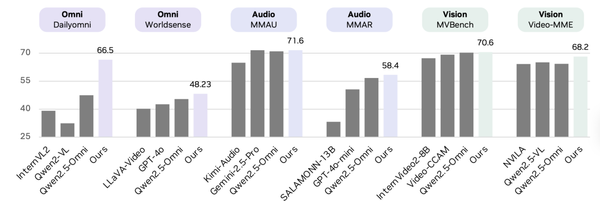# Y Combinator Conversation with Nick Joseph — Scaling Laws, Compute, and the Future of AI
**Date:** 2025‑10‑16 11:01 (Beijing)
> *“Scaling laws show that as you put in more compute, data, and parameters, model loss decreases in a predictable way — this is the core engine driving AI progress.”*


*Image source: Y Combinator*
---
## 🔍 Z Highlights
- **Driving down the loss function** is the core of pretraining — the single, consistent goal over time.
- **Alignment** is about teaching models to share human goals — especially critical once models surpass human intelligence.
- With **unlimited compute**, the main challenge becomes *using it efficiently* and solving scaling engineering.
- **Current bottleneck:** Limited compute > lack of algorithms.
*Nick Joseph — Head of Pretraining at Anthropic, with prior work at Vicarious and OpenAI on AI safety and scaling research — shares his insights on pretraining strategies, scaling laws, data, and alignment. This interview (Sept 30, 2025) is hosted by Y Combinator.*
---
## 1. From AI Safety to Leading Pretraining at Anthropic
### Career Path
- **At Vicarious:** Focused on computer vision models for robotics; gained ML engineering fundamentals & infrastructure skills.
- **At GiveWell Internship:** Exposure to early AGI risk discussions; opted for AI path to make real-world impact.
- **At OpenAI:** Joined safety research, worked on code generation using GPT‑3; realized self-improvement potential of AI; moved to Anthropic at founding.
---
## 2. Pretraining Fundamentals
### What is Pretraining?
- Use *massive compute* with large, unlabeled datasets (e.g., the internet).
- **Next‑word prediction** = primary objective (dense learning signal).
- Scaling compute, parameters, and data **predictably reduces loss** → better performance.
**Key Principle — Scaling Laws:**
Compute ↑ + Data ↑ + Params ↑ ⇒ Loss ↓ (predictable curve)
Drives a revenue → better models → more revenue feedback loop.
---
## 3. Why Autoregressive Modeling Won
- Outperformed alternatives (masked LM like BERT) via empirical testing.
- **Advantages:** Easy sampling of coherent text → product-friendly.
- Supports smooth **business–tech loop**: release → revenue → reinvest in training.
---
## 4. Engineering at the Compute Frontier
### Challenges:
- Training = vast hyperparameter space; scaling laws help but tuning still needed.
- Infrastructure: early Anthropic used cloud, with extreme hardware optimization.
- **Distributed Training:** Had to code custom communication (all‑reduce, etc.), beyond public frameworks.
**Optimization Focus:**
1. Use data, pipeline & model parallelism together.
2. Custom low-level ops for attention mechanisms.
3. Profiling at scale (hundreds-thousands GPUs) — often required self-built profilers.
---
## 5. Scaling Teams and Specialization
- Growth → split into specialists (attention, parallelization…) and generalists.
- Need balance: avoid *knowledge silos* or *shallow breadth*.
---
## 6. Hardware & Training Realities
- **GPU/TPU Diversity:** Different strengths (throughput vs bandwidth) → match workloads to hardware.
- **Failures:** A single GPU fault can take down training; need reproducible minimal test cases for vendor debugging.
---
## 7. Pretraining vs Post-training
- Shift toward post-training (RL, alignment tuning) is real — *optimal balance* is still unknown.
- Pretraining still central for base capability gains; post-training builds reasoning & task adherence.
---
## 8. Data Challenges
- Claims of exhausting “useful Internet” are uncertain; quality vs quantity trade-offs persist.
- **Risk:** Training on AI-generated content → model copies flawed distribution.
---
## 9. Evaluation & Alignment
- **Loss function** = robust, but ultimate metric should align with deployment goals.
- Designing low-noise, fast, meaningful evals is hardest.
- **Alignment:** Matching model goals with human values; requires practical constraints (rules, prompts) plus theory.
---
## 10. Paradigm Shifts & Hidden Bugs
- Expect *new AI paradigms* beyond scaling — RL is one such shift.
- **Worst fear:** Subtle, hard-to-find bugs wasting months of compute.
- Rare but vital skill: tracing issues across *all stack layers* (ML logic → CUDA → networking).
---
## 11. Future Directions
- Autoregression may be *enough* for AGI, but optimizations (attention, caching…) will matter as compute grows.
- Inference efficiency is crucial — large, slow-to-serve models hurt UX.
**Startup Opportunities:**
- Specialized applications atop current models.
- Chip validation & failure detection tools.
- Scalable org management for large-scale projects.
---
## 📺 Original Source
*Original video: [Anthropic Head of Pretraining on Scaling Laws, Compute, and the Future of AI](https://www.youtube.com/watch?v=YFeb3yAxtjE)*
---
## 💡 Related Tools: AiToEarn
Platforms like **[AiToEarn官网](https://aitoearn.ai/)** provide:
- AI content generation + publishing to Douyin, Kwai, WeChat, Bilibili, Xiaohongshu, Facebook, Instagram, LinkedIn, Threads, YouTube, Pinterest, X.
- Analytics & AI model rankings: [AI模型排名](https://rank.aitoearn.ai)
- Open-source: [GitHub repo](https://github.com/yikart/AiToEarn) | [Documentation](https://docs.aitoearn.ai/)
Enables creators and teams to **monetize AI projects** and iterate rapidly — mirroring feedback loops in AI model scaling.
---
*This recap is compiled from original content linked above and does not represent Z Potentials’ official position.*





